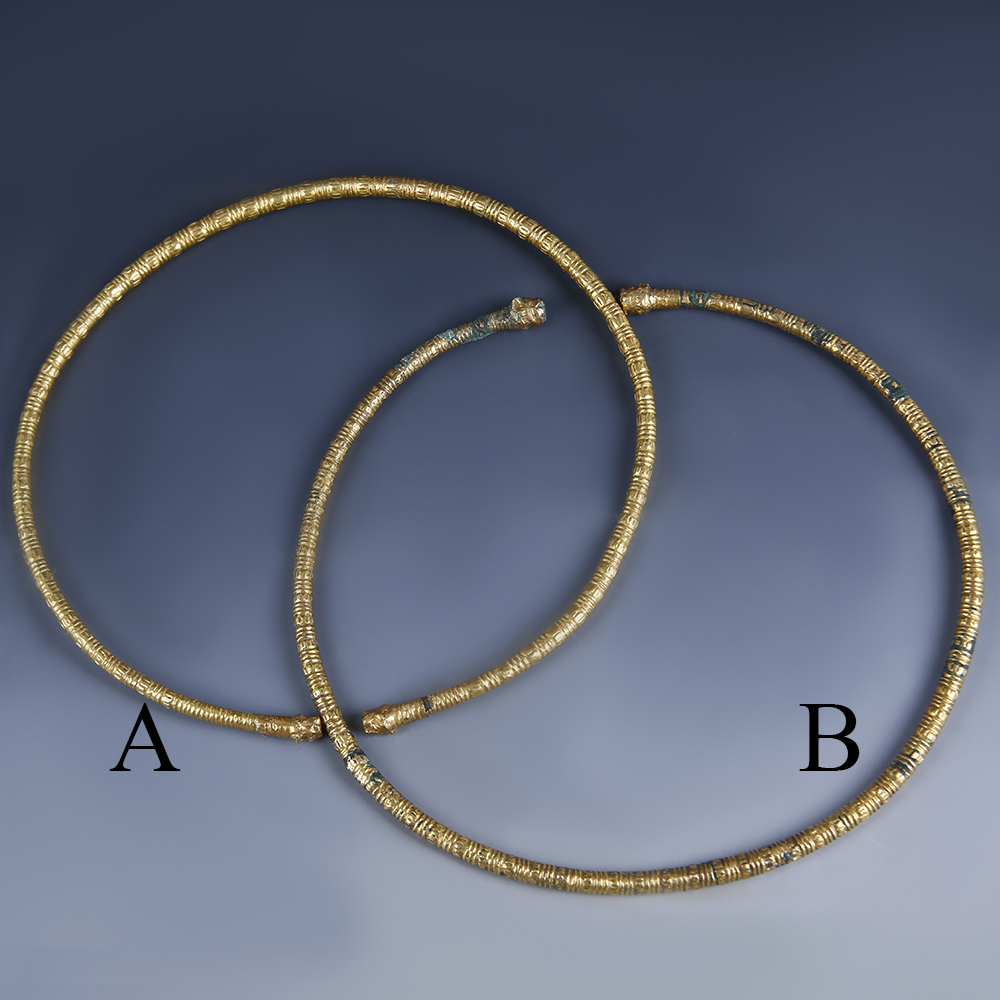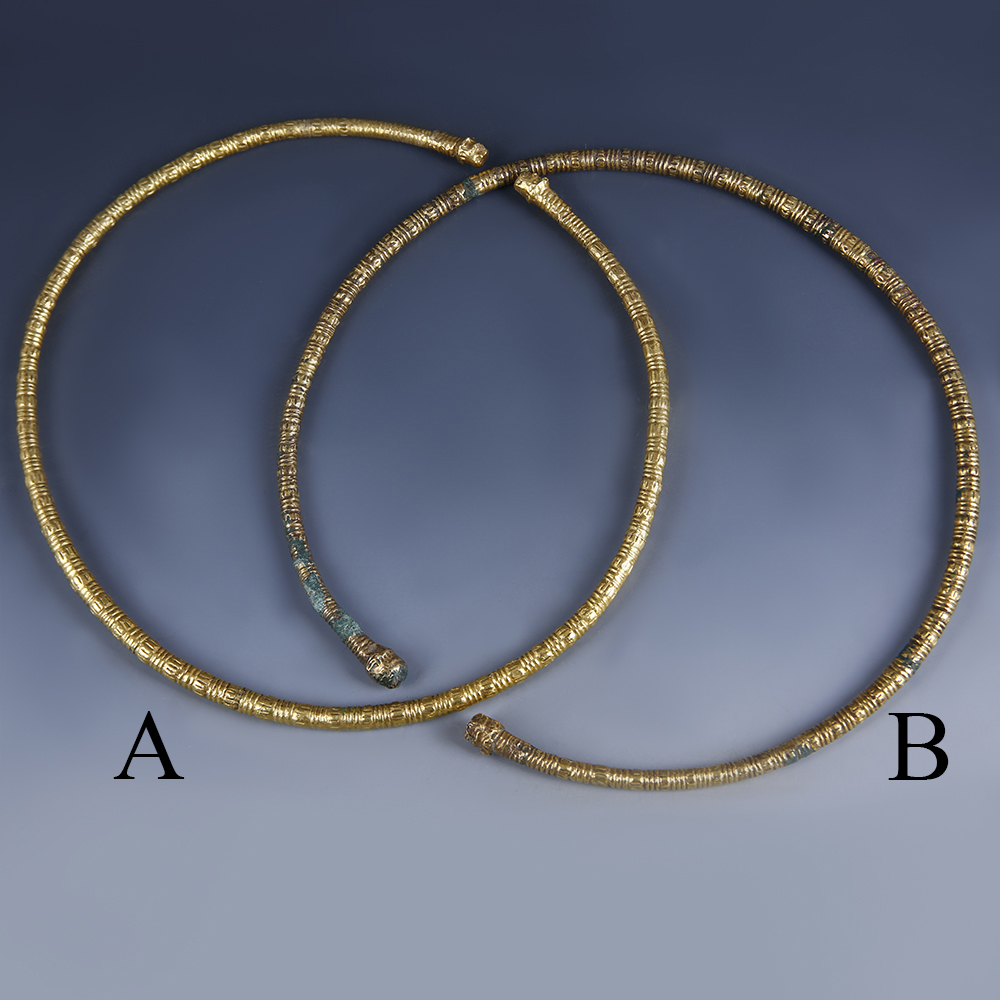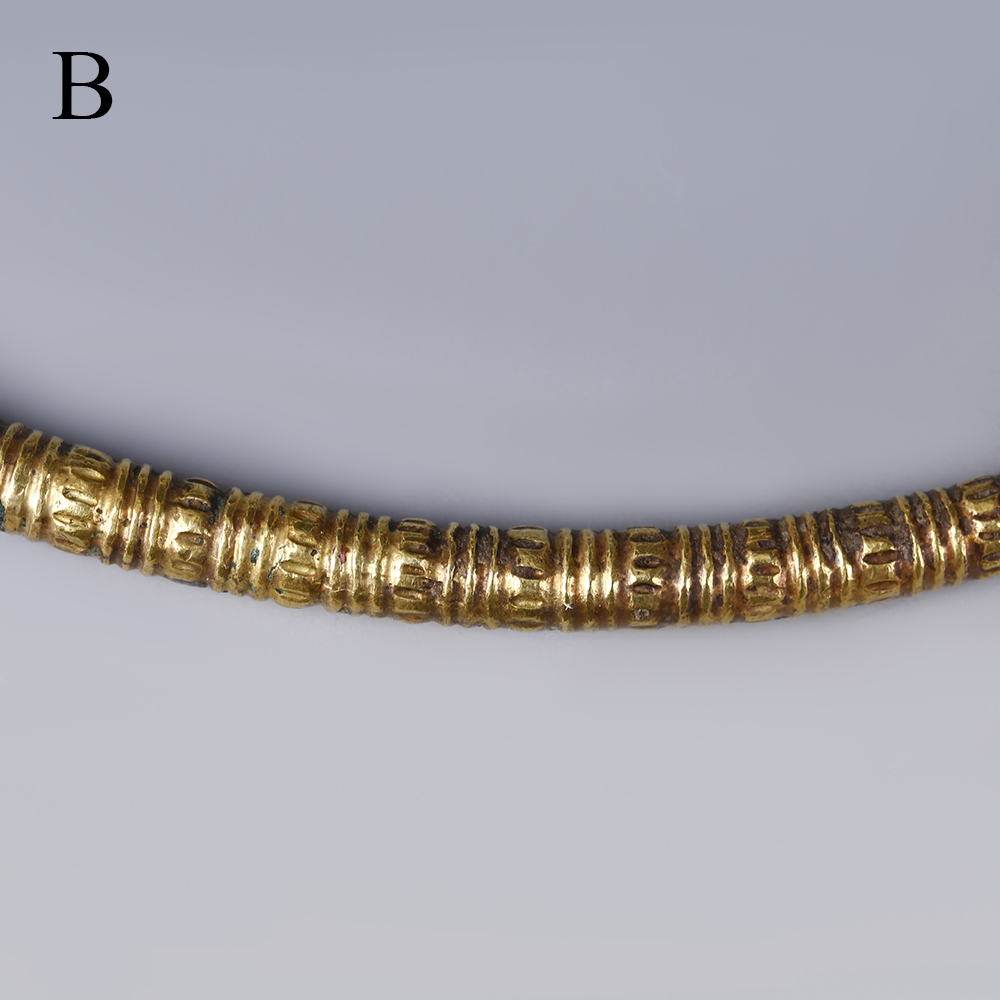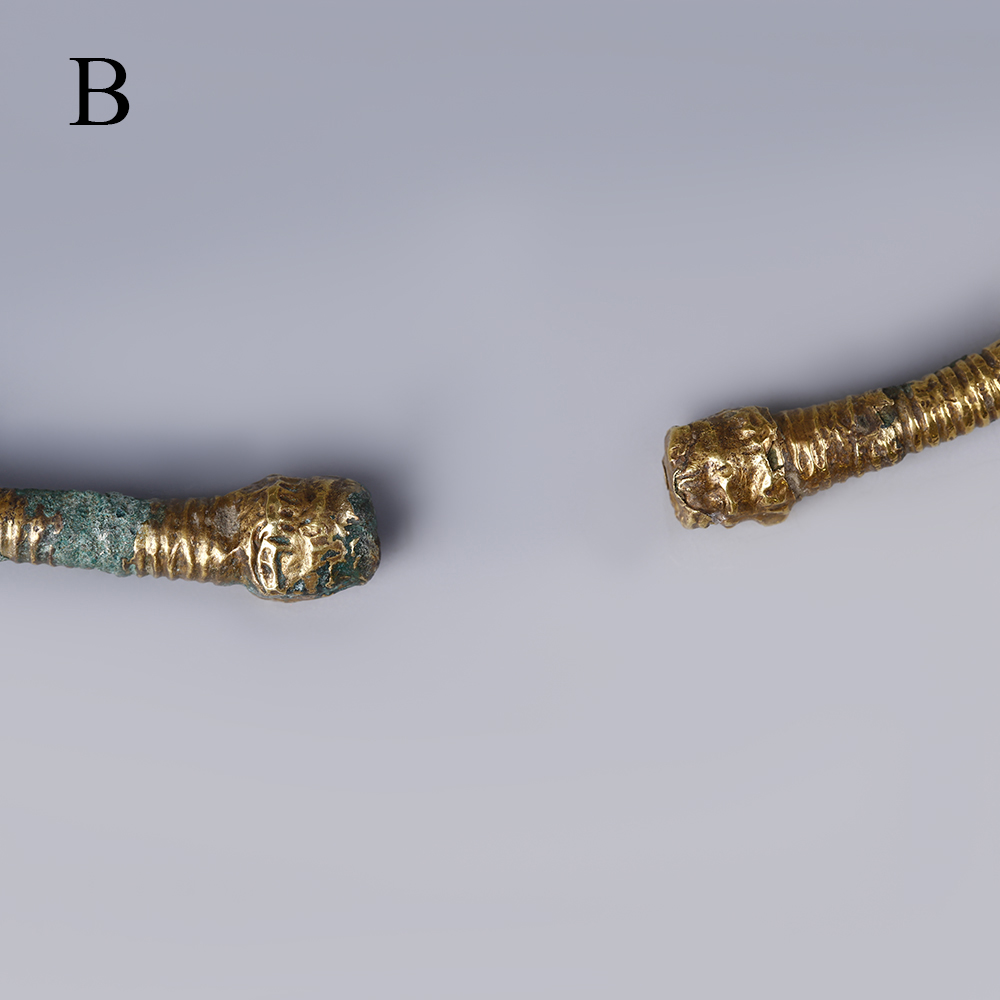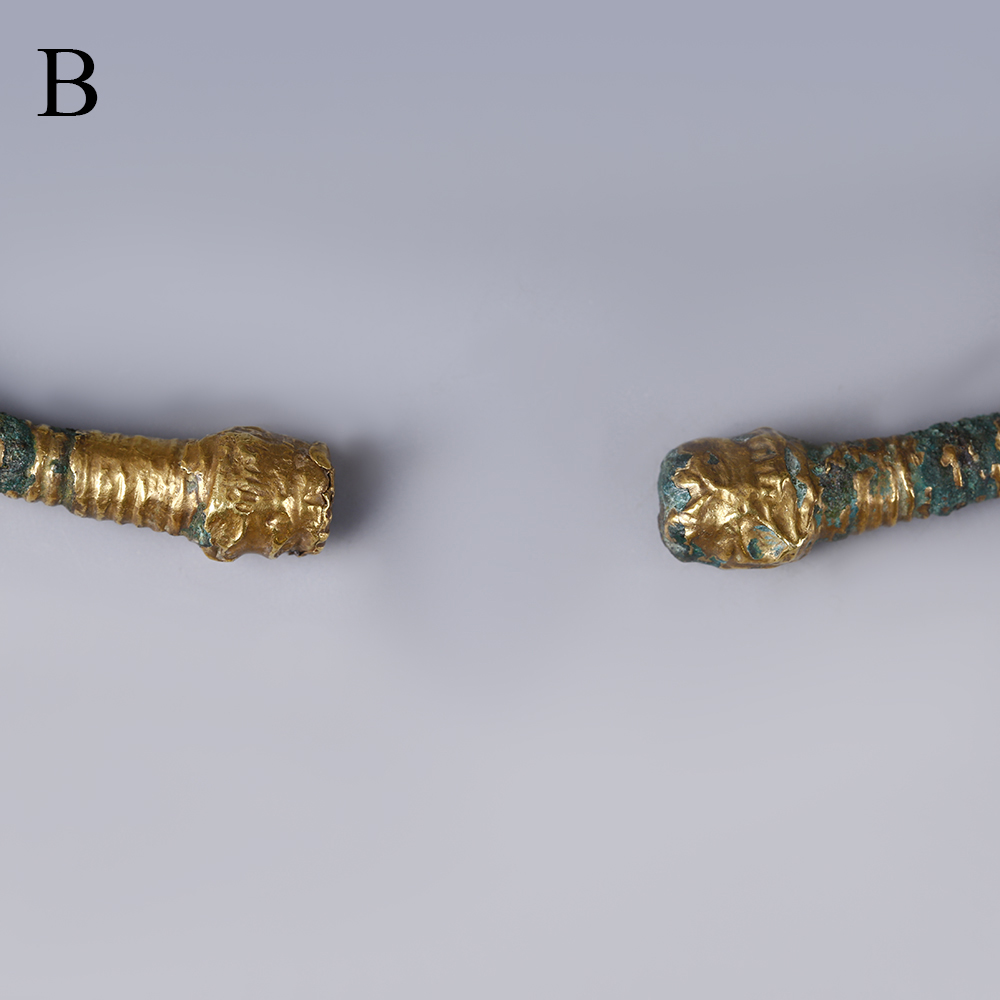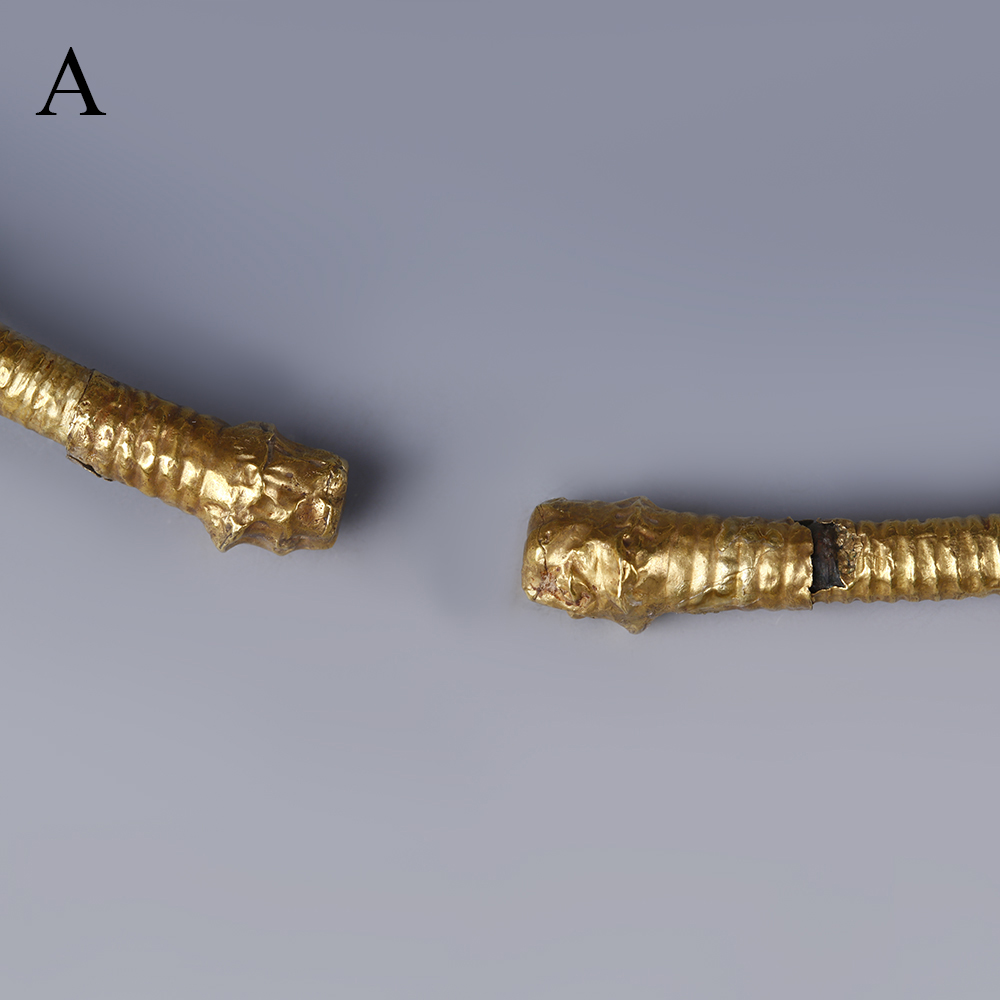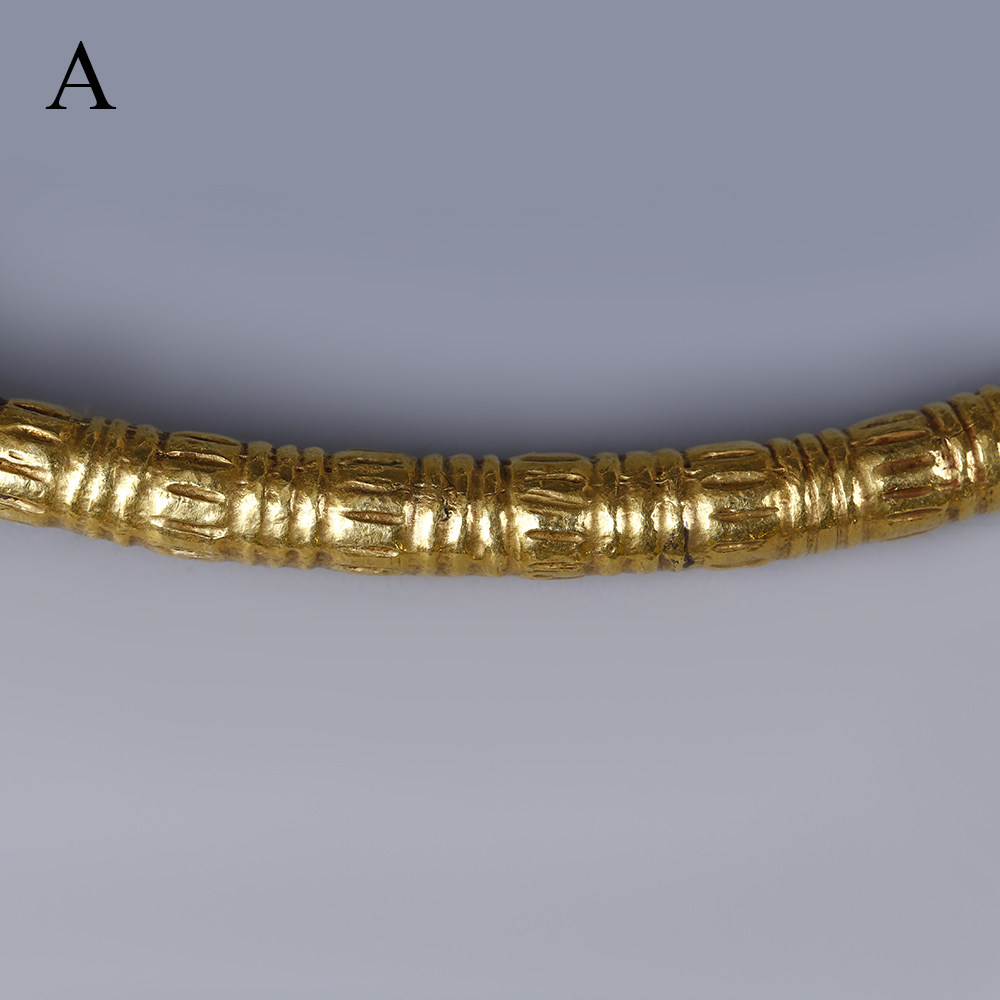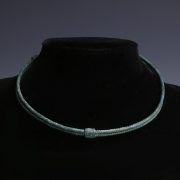The Scythian were nomadic people that dominated what today is the southern Siberia, from about the 7th Century BC up until the 3rd Century BC. They seem to be well known even at their times, especially for their warrior’s skill. Herodotus writes in his Histories: “None who attacks them can escape, and none can catch them if they desire not to be found”. But it’s as craftsmen that they are now admired by historians. They used to work metal, iron and especially gold, which, due to their nomadic living, have been found especially in burials. It was their strong belief in the afterlife that brought them to cover the deceased in jewels, both of massive and small dimensions. Although it’s still difficult to determine which technique have been used by the Scythian to craft their jewels, analysis of gold suggest that they must have had specialized tools such as weights and scales for measures, well equipped furnaces and punches, scrapers and engraving tools for decorations. On top of geometrical patterns, there is a consistent theme of animals, especially horses and lions. While the first were considered their closest companions, lions were admired as the apex predators.
